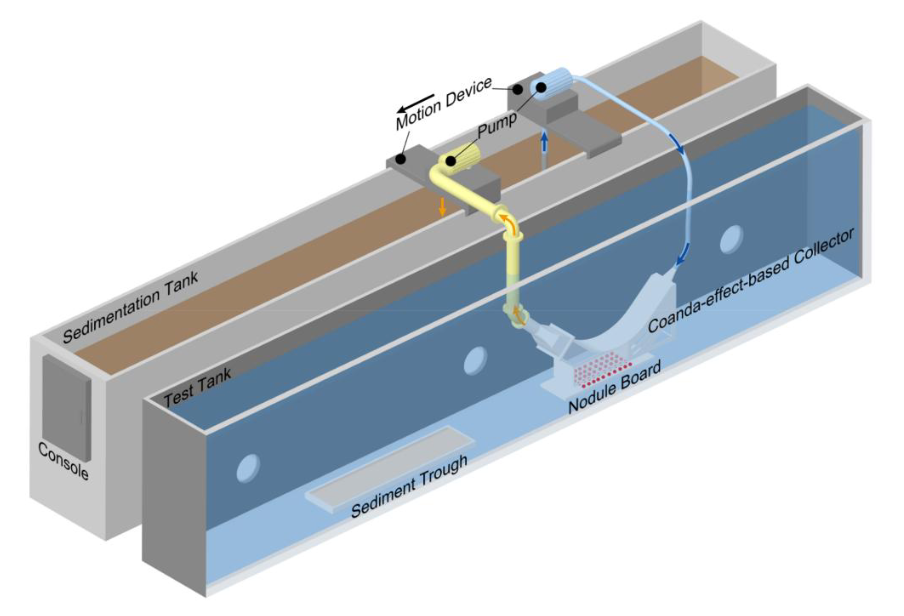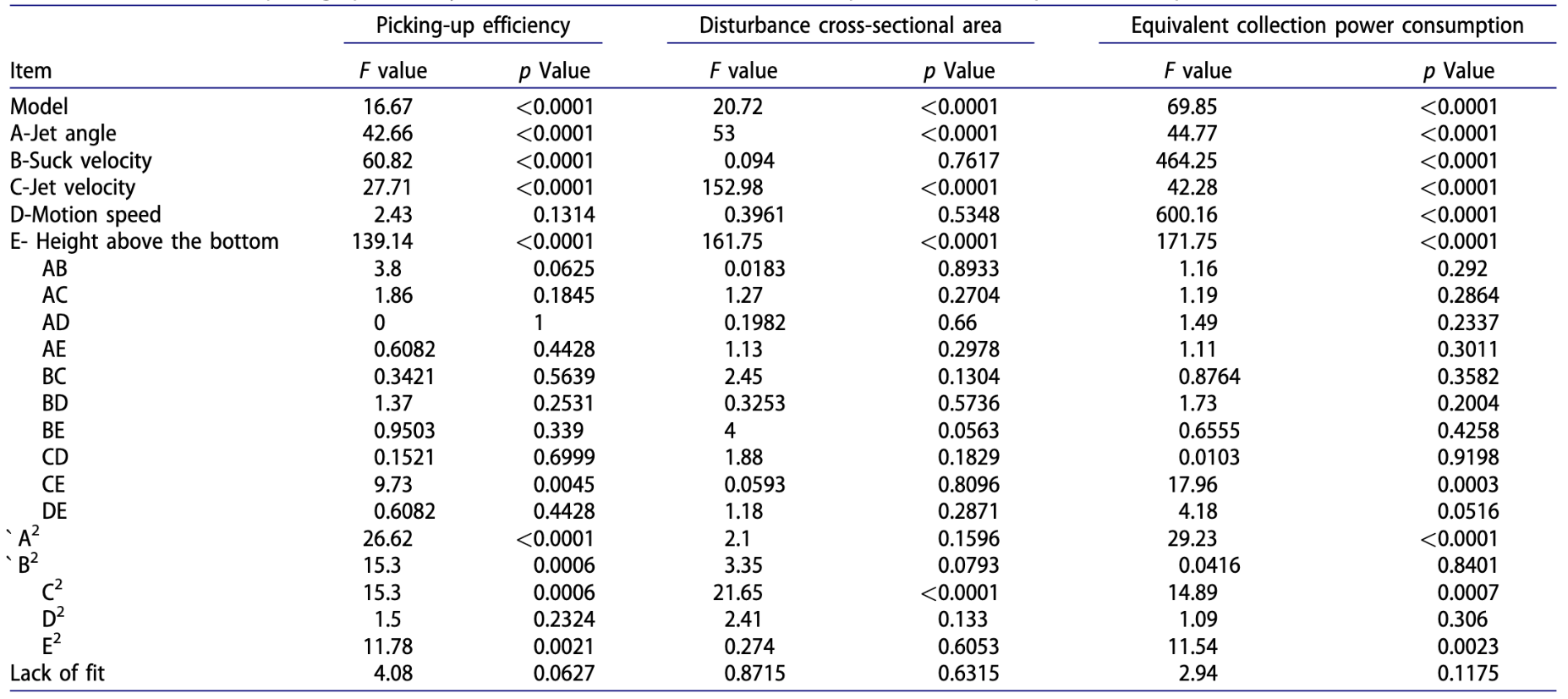Tuning a curved water-jet collector for efficient, low-disturbance nodule pickup

Title: Experimental study and parameter optimization of Coandă-effect-based collector of deep-sea polymetallic nodule.
Author / Sponsor: Qiang Yang; Dingbang Wei; Jianxin Xia; Guangzhi Liu. Affiliations: School of Ocean Sciences, CUGB; Ministry of Education Key Laboratory of Polar Geology and Marine Mineral Resources (CUGB); Beijing Institute of Exploration Engineering.
Date: February 2025
Report Length: 15 pages
BLUF: Using response-surface methodology in a controlled tank, the study links five operating inputs of a Coandă-effect collector to pickup efficiency, sediment disturbance, and an energy metric per meter. A validated setting in the tested space achieved 90.00 percent pickup with a disturbance cross-section of 22.53 cm² and an equivalent power of 16.98 kW·s·m⁻¹.
A Coandă collector directs a high-speed wall jet along a curved surface so the flow adheres and draws nodules into a suction duct. The facility comprises a test tank and a sediment tank with a motion device, pumps, a nodule board for pickup tests, and a sediment trough for erosion measurements. The test sequence sets water depth, executes either a pickup or erosion pass, then logs collected nodules, power, and erosion geometry. Figure 1 is a clear schematic of this setup and helps readers visualize how the nodule board and sediment trough sit on opposite sides of the tank.

The five inputs studied are jet angle, jet velocity, suction velocity, motion speed, and the height of the collector above the bottom. The ranges are 30-45 degrees for angle, 7-13 m s⁻¹ for jet velocity, 1.0-2.0 m s⁻¹ for suction velocity, 0.40-0.60 m s⁻¹ for motion speed, and 60–100 mm for height. A Box-Behnken plan with 46 runs captures linear, interaction, and quadratic effects so the response surfaces can be fit reliably.
The fitted models and the study’s conclusions identify which inputs most strongly influence each response within the tested space. For pickup efficiency, height above the bottom, suction, jet velocity, and jet angle have significant influence, while motion speed is not dominant. For disturbance area, height, angle, and suction are the key drivers. For equivalent power consumption, suction, motion speed, and height dominate. These rankings are consistent with the ANOVA summary presented in Table 5, which the paper uses to evaluate factor significance.

Under a desirability framework, the authors report and validate one operating point: 37.14 degrees jet angle, 1.48 m s⁻¹ suction velocity, 8.5 m s⁻¹ jet velocity, 0.55 m s⁻¹ motion speed, and 71.37 mm height above the bottom. At this setting the measured outcomes are 90.00 percent pickup, 22.53 cm² disturbance cross-section, and 16.98 kW·s·m⁻¹ equivalent power. The paper also classifies four observed nodule motion paths and notes that several validation indicators were not ideal, motivating further repeat testing.
By quantifying how angle, suction, jet speed, travel speed, and height trade off against pickup, disturbance, and energy, the study provides concrete operating targets for Coandă-based collectors that aim to raise recovery while managing energy and sediment effects.



